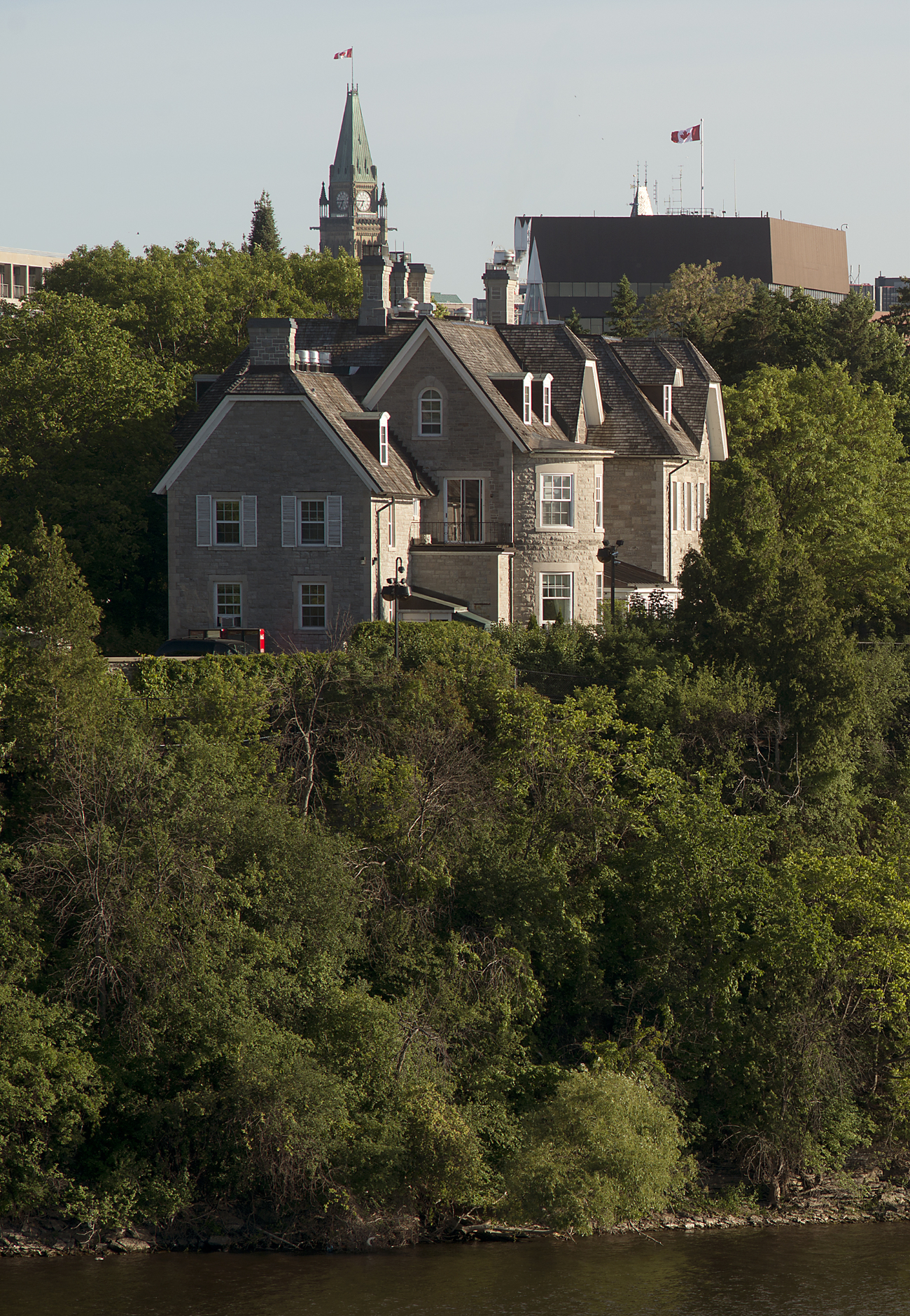24 Sussex Drive: Why It Matters Part 1

24 Sussex Drive, the currently unused (and semi-derelict) official residence of the Prime Minister of Canada, has been in the news again lately. On February 21st, Heritage Ottawa hosted a panel discussion on the building’s future at the Carleton Dominion-Chalmers Centre. Much good sense was spoken by panelists Mark Brandt, Sheila Copps, Marc Denhez and Patricia Kell. In fact, good sense dominated the conversation so completely that arguments in favour of demolishing the house barely surfaced at all. But those arguments are out there: on social media, in news comment sections, and by the water cooler. And they too need to be heard, if only to point out why they are wrong. I’ll explore this theme over at least a couple of blogs. I’ll start by considering the historical importance (or not) of the house.
The most perplexing argument against renovating 24 Sussex is the claim that it isn’t actually a historically important building. It was just an ordinary house, this argument goes. It didn’t even become the PM’s residence until 1951 !
That date is correct. But let’s put it into perspective: Canada has only been a country since 1867. In 1951, the country was 84 years old. Now, it’s 157 years old. In other words, 24 Sussex has been the official residence of our Prime Minister for nearly 50% of the country’s history. That’s a pretty substantial slice of the nation’s existence.
Moreover, it was never an ordinary house. It was always an exceptional one, built on a spectacularly elevated site where three rivers – the Ottawa, the Rideau and the Gatineau – converge. It was built in 1866 for lumber baron (and later MP) Joseph Currier. It was sold in 1901 to another lumber baron and MP (and later senator), William Edwards. It remained in his family until the Canadian government appropriated it in 1943. To be clear: any surviving confederation-era house built for lumber-industry titans would be of enormous historical importance to Ottawa. After all, the place was founded as a lumber town. This particular house also happens to have been the official residence of 52% of our Prime Ministers (although not all of those have resided in it). How can anyone claim that the building is not historically important?
Ah, the sceptics say, but this isn’t really the house that was built in 1866. It was altered by its second owner, and changed even more by the government in the 1940s. It’s not really an “old” building, and it doesn’t deserve heritage status.
The best-known proponent of this argument has been a former resident of the house, Maureen McTeer, who lived there while her husband, Joe Clark, was Prime Minister in 1979-80. In 2015, she told the CBC: “The original home looked totally different than the one we were left with after 1950. I find it quite fascinating that somehow people think it’s a heritage building.”
The assumption here is that a building is only a “heritage building” if its appearance is essentially unchanged from the day it was built. This belief has no connection to reality. The story of an old building is a book with many chapters. All of those chapters are equally valid, important and integral parts of the building’s history. There is no single moment in a building’s life that alone represents its “real” identity. 24 Sussex was built in 1866. Canada was founded one year later. Both look very different today, because that’s what time does. But both are still the genuine article.
Imagine the implications if we accepted original appearance as the defining characteristic of “heritage”. Canterbury Cathedral, where no visible trace remains of the original Saxon church, would not be considered a heritage building. The Great Mosque of Cordoba, which has been enlarged and altered so much that you can barely discern the original core, would not be considered a heritage building. Even the Great Pyramid of Giza, stripped of almost every stone that a viewer 4500 years ago would have seen, would not qualify for heritage status. This simplistic definition of “heritage” paints the whole of built history into a ridiculously small corner.
There are other, more nuanced arguments against retaining 24 Sussex Drive. I think they’re wrong too, and I’ll explore why in a later blog.
Peter Coffman
peter.coffman@carleton.ca
@TweetsCoffman
@petercoffman.bsky.social